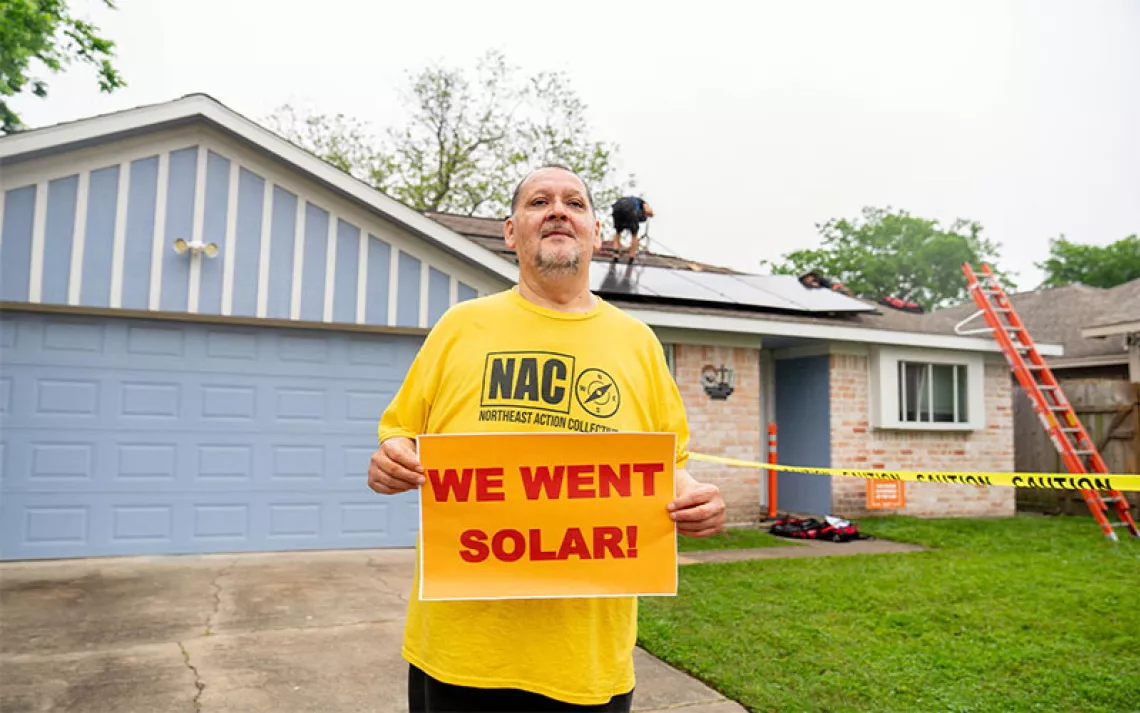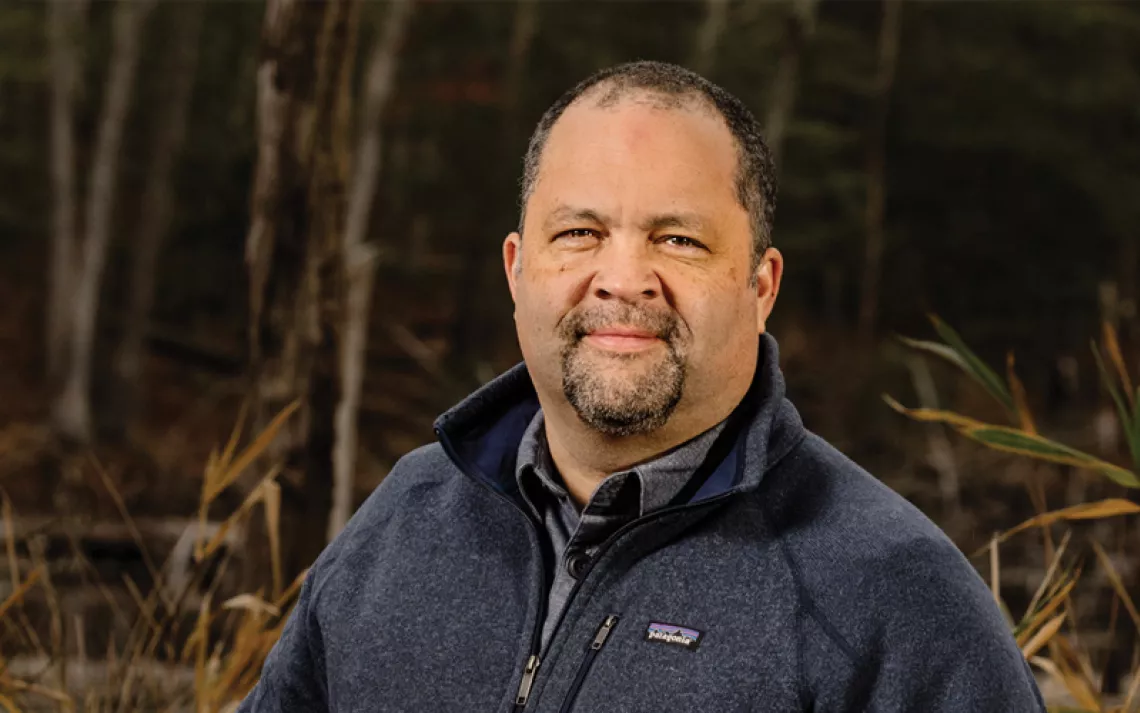Here's How to Bring Solar Energy to the South
Meet Laura Zapata, clean energy advocate

Photo by William DeShazer
PRIOR TO BECOMING A COMPANY COFOUNDER and CEO, the closest Laura Zapata had come to running a business was selling chocolate to her classmates in fifth grade. But as the daughter of Colombian immigrants who settled in Memphis, Tennessee, when she was 10, Zapata was used to figuring things out quickly. She was the first in her family to learn English, frequently serving as the connector between them and the surrounding community.
“There was not a written . . . blueprint to follow,” Zapata said about her family’s arrival to the United States in 1999. “[The] North Star was always: How do you succeed and make the most of this opportunity to be in this country?”
Zapata’s entrepreneurial instincts were evident throughout her career as a legislative correspondent, a political press secretary, and a public affairs specialist. Now, thanks to a supportive nudge from an old boss, former Democratic Tennessee governor Phil Bredesen, she’s got the top spot at the clean energy firm Clearloop.
When Bredesen left office in 2011, he wanted to bring renewable energy to Tennessee. His solution? Target the private sector. Bredesen cofounded and invested hundreds of thousands of dollars in a utility-scale solar and battery storage company called Silicon Ranch. He soon learned that his firm’s services could be too expensive for some companies and require multidecade contracts, preventing smaller businesses from tapping into its benefits. In 2015, Bredesen began noodling on the idea of Clearloop, a platform that would allow an organization to put down any amount of money with no long-term contract to help pay for new solar farms—and in the process allow the organization to reduce its carbon footprint.
In 2018, Bredesen ran for Senate, and Zapata, a Dartmouth grad eager to come home after working for Uber in California, accepted a position as his communications director. After Bredesen lost the election, he swept the dust off his old Clearloop proposal and approached Zapata and another former staffer to see if they’d be interested in turning his idea into a functioning company.
“It was this opportunity to not only work in the climate space but really to do it in a way that brought investment back to the Southeast.”
“Sometimes you meet people and you just say, ‘That person is going to make things happen in the world,’” Bredesen said of Zapata. “We didn’t really worry too much about the titles, but after a period of time, everybody agreed that Laura . . . ought to be the CEO.”
Zapata couldn’t refuse the offer to be one of Clearloop’s founders. “It was this opportunity to not only work in the climate space but really to do it in a way that brought investment back to the Southeast,” she said. “When we were starting Clearloop, it was this idea of ‘How could I give back to the community that helped raise me?’”
Many carbon-offset projects seek to prevent or remove greenhouse gas emissions by saving a patch of forest or providing intangible renewable energy credits equal to a set quantity of power. At worst, some offset projects fail the test of “additionality”—they don’t create new clean energy that wouldn’t have existed otherwise. Even if they pass the additionality test, the offsets may be underwriting projects in areas that already have significant renewable energy. According to an analysis from Sol Systems, a solar energy firm, “One criticism of [renewable energy credit] markets is that they were designed to drive renewable energy and have succeeded. But they are not calibrated to necessarily incentivize the outcome we are all trying to achieve—a net-zero economy.”
To help achieve that goal, Clearloop focuses on decarbonizing the electrical grid by building new solar farms in locations where they can have the most impact, like the American South. The organization uses data from WattTime, an environmental tech nonprofit, to track how companies are spending money to reduce carbon emissions. WattTime has dubbed this impact-oriented focus “emissionality”—a play on additionality.
“If you build another solar farm in California, it’s likely you’re just going to push off another solar farm,” Henry Richardson, a senior analyst at WattTime, said. “But if you do it in Tennessee, . . . it’s very likely that you’ll be pushing off coal.”
In 2021, Silicon Ranch bought Clearloop, and Zapata’s team started developing its first solar farm in Tennessee. The next year, Clearloop added two more projects to its portfolio. According to data from WattTime, these three solar farms will prevent 282 million pounds of greenhouse gases from being emitted.
One of those solar farms is near Paris, Tennessee. The 6.5-megawatt solar farm is funded, in part, by the US electric automaker Rivian, which wanted to offset the company’s emissions and the emissions customers create when they charge their vehicles. “Every project we deploy should be built with the intent of ‘How can this project be most influential in reducing our reliance on fossil-based-fuel generation?’” said Andrew Peterman, Rivian’s director of advanced energy solutions.
With Clearloop’s foothold established in Tennessee, Zapata is now plotting to expand. In early 2024, Clearloop finished two new projects in Mississippi, with another one set to be completed by the end of the year. Microsoft collaborated on one project, and Vanderbilt University supported another. By the end of 2024, Clearloop’s projects will power nearly 4,000 homes across the Southeast. Next year, Clearloop will break ground on a project in northern Louisiana. Zapata hopes to eventually start new ones in Arkansas, Alabama, and New Mexico.
“We’re expanding our geographic reach. We’re continuing to expand our customer base,” Zapata told Sierra. “We’re trying to go build projects in the parts of the country that are the most carbon-intensive, so you get the most carbon bang for your climate buck.”
 The Magazine of The Sierra Club
The Magazine of The Sierra Club



